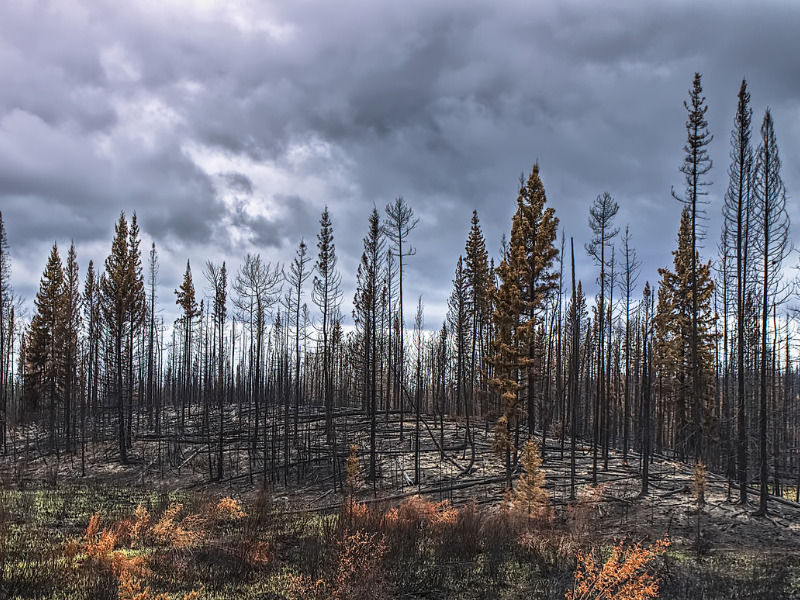Growing wildfire risk puts pressure on insurance industry: experts

Canadian insurers are grappling with the higher risk of wildfires as this year’s fire season breaks records, and experts say rising premiums are just one way the industry is seeking to adapt to the changing landscape.
“The more losses, the more of these events, the higher the risk and the higher insurance premiums will trend,” said Craig Stewart, vice-president of climate change and federal issues at the Insurance Bureau of Canada.
Thousands of residents in British Columbia and the Northwest Territories were forced to evacuate their homes in recent weeks as hundreds of wildfires raged on. More than 15 million hectares have been burned so far this year by almost 5,800 fires, according to the Canadian Interagency Forest Fire Centre Inc.
Nadja Dreff and Marcos Alvarez at DBRS Morningstar estimated in a report this week that total wildfire-related insured losses in Canada for the third quarter of 2023 will be between $700 million and $1.5 billion, which they called “manageable” for insurers.
“However, the wildfire season is not yet over and there is the potential for any of the fires to intensify and further pressure Q3 2023 results, especially if the fires affect densely populated regions, economic hubs, or key infrastructure. Larger and more frequent weather-related losses will continue to pressure property insurance prices higher in the near term,” they said.
Historically, wildfire damage has been a lot less common than flooding, said Kathryn Bakos, director of climate finance and science at the Intact Centre on Climate Adaptation.
But when it does happen, it tends to be significantly worse on average in terms of damage, she said.
“We’re seeing this right now in Kelowna, with the fires in Northwest Territories. When you have a wildfire event, you have catastrophic loss of the home,” she said.
The 2016 Fort McMurray fire is perhaps the best example of this _ while flooding tends to account for a large chunk of losses every year, the Fort McMurray fire is the largest-ever insurance loss in the country, said Bakos, accounting for almost three quarters of total insured losses that year.
“What climate change means in the medium and longer term is more extreme. So you’re going to have more heat, dryness and less rain in the system, as well as more rain and storm surges,” Bakos said.
Annual catastrophic insurable loss claims have risen as a result, she said.
As fire risks rise, insurers are increasingly looking at communities’ fire defences and taking them _ or a lack thereof _ into consideration for premiums, said Stewart.
No single event drives insurance premiums up, but overall trends do, said Stewart. Insurers price risk, and the risk of major weather events is rising, he said.
Prices have been rising faster in the Western provinces, said Stewart: “Wildfires and floods are driving the premiums higher in the places where we’re seeing these trends now.”
In the U.S., which is seeing similar trends in extreme weather, some companies are deciding that it’s just not worth the risk. Recently some major insurers stopped offering new policies in California and other states amid rising extreme weather trends.
Those U.S. insurers left markets in part because state regulations prevented them from passing on the higher costs of increased risk, noted Stewart, making such a move less likely in Canada.
While Canadian insurers show no signs of exiting markets right now, what’s happening in the U.S. should serve as a warning signal, Bakos said, and an opportunity for companies to look at how to maintain the insurability of Canadian homes.
“We know what to do. We just have to do it,” she said.
Insurers incentivize consumers to decrease their risk of fire in order to save on their policy, said Stewart. They also offer incentives to consumers in communities with certain protections, helping indirectly pressure their communities to take those steps as well.
“Those incentives likely now need to be re-examined and expanded so that homeowners have a greater array of incentives to protect them and to encourage them to retrofit their homes to be more resilient to fire, flood, wind and other perils,” he said.
“The industry is actually taking a hard look at incentives right now in conversation with governments across the country.”
The industry is also looking at how to elevate consumer awareness of risk, said Stewart, adding that more government support is needed for both awareness and incentivization.
“The federal government needs to play much more of a leadership role in wildfire modelling, risk modelling, in providing resources to communities to develop wildfire community action plans, and to design retrofit programs,” he said.
Feature image by iStock.com/DK Johnston







